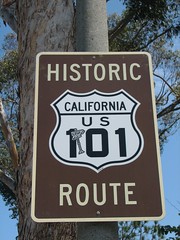 Image by MR MARK BEK via Flickr
Image by MR MARK BEK via Flickr
This is first of a multi-part series of posts on the basic nuts and bolts of special ed law. We will review the statute and regs, as well as the supreme court decisions and a few of the most important opinions of the circuit courts of appeal. This is just an overview. There is a LOT more!!!!!
So we hope that you enjoy the introduction, but if you get into a problem, consult a lawyer, preferably one experienced in this complex area.
A. Sources of Special Education Law
The primary source of special education law is the federal Individuals with Disabilities Education Act, 20 U.S.C. Section 1400, et. seq., hereafter sometimes referred to as “IDEA.” (NOTE: many people refer to the sections of the act as beginning with section 600. Thus “Section 615” would be found at 20 U.S.C. Section 1415, etc.) The regulations promulgated by the United States Department of Education to implement the IDEA are found at 34 C.F.R. Part 300. Many state have adopted their own special education regulations.
Court decisions that interpret the IDEA issued by the courts of your state, by the United States Supreme Court, and by the federal Circuit Court of Appeals and the federal District Courts that cover your state or District are binding. Other court opinions and hearing officer decisions issued under the Act may be cited and used if you find their reasoning to be persuasive, but they are not binding precedent. Similarly, opinions issued by the federal Department of Education interpreting the Act provide helpful guidance, but they are also not binding precedent.
Although the IDEA and the federal regulations, and corresponding state regulations and policies, and the relevant decisions interpreting them are by far the most important sources of special education law, other statutes do sometimes become involved. The Rehabilitation Act of 1973, 29 U.S.C. Section 794, et. seq., commonly referred to as “Section 504,” prohibits discrimination on the basis of disability in certain federally funded programs, including education. The federal regulations that implement the statute are found at 34 C.F.R. Part 104.
Another statute that will impact upon special education law is the No Child Left Behind Act, 20 U.S.C. Section 6301, et. seq., hereafter sometimes referred to as “NCLB.” The regulations implementing NCLB are located at 34 C.F.R. Part 200.
Finally, another law that pertains to educational records is the Family Educational Rights and Privacy Act, 20 U.S.C. Section 1232g, et. seq., hereafter sometimes referred to as “FERPA.” The regulations implementing FERPA are found at 34 C.F.R. Part 99.























